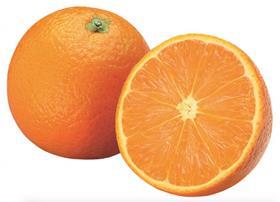
A late navel orange which was discovered in the remote Cambria region of the Eastern Cape is likely to be the next big thing in South African citrus exports.
It was discovered in a valley surrounded by mountains virtually at the entrance to the Baviaanskloof Nature Reserve, one of South Africa’s best-known wilderness areas. It lies on the banks of the Gamtoos River in the citrus growing region of the same name in the Eastern Cape.
Late navels have been popular with citrus growers because they stretch the season. In the past some late varieties have been imported, but Cambria, and another local variety, Witkrans, have now entered the arena as the clear favourites with growers.
The Cambria navel has a clear link with Wales in the UK. The name Cambria comes from the same root as Cymry, the Welsh word meaning 'fellow-countrymen'.
The region was named by a Welshman who was one of the early inhabitants and this reveals the late navel’s Celtic connections.
The story of the Cambria navel is remarkable because it is not a new variety, but its real potential has only been discovered in recent years.
South African plant breeder and cultivar developer Stargrow has recognised its potential and is looking after the cultivar’s international management.
Stargrow’s Waldo Maree said that Cambria is classified as a navelate orange which fills an important gap in South Africa’s late navel production season.
Louis Kriel, director at Southern Fruit Growers – one of the leading exporters of Cambria – said it was a premium late navel variety.
“The mutation was found in a Washington navel orchard in the area Cambria in the Gamtoos River Valley. The variety got its Plant Breeders Rights in the late 1990s,' he explained.
The variety only has a tree royalty, which means that growers only pay royalties on the trees. Because there is no export or marketing royalty, it is one of those cultivars that will be popular with growers. It is also reported that plant breeders’ rights will expire in the near future.
“After a few years in the market Cambria became the standout late navel because of good eating quality,” said Kriel. “Due to the elongated shape of the variety it is also easy for clients to distinguish from other navel varieties.”
There is another advantage to the variety. Cambria has a closed, very small to almost no navel-end and this makes it a popular choice for growers.
Because of a closed navel-end it is a low-risk variety for black core rot, False Codling Moth (FCM) is also reported to be less of a risk, as well as Mealy bugs moving down to open navel-ends.
All these issues become a great risk for sensitive markets like China, because they are phytosanitary pests.
The fruit has a smooth rind and is firm. This is important because increasingly the outward appearance of oranges will have to compete for the consumer’s eye.
Navels have for long been viewed as the best tasting oranges – and if in future they compete with increasing volumes of soft citrus and mandarins, they will also have to taste very good.
According to the 2020 Citrus Growers’ Association statistics there are 2,374 hectares of Cambria planted in South Africa.
This is 15 per cent of the entire navel planting in South Africa, making it one of the top three planted navel varieties.
In 2018 already around 2m cartons of Cambria or Cambria navelettes were exported.



